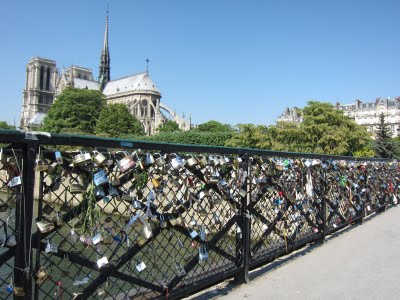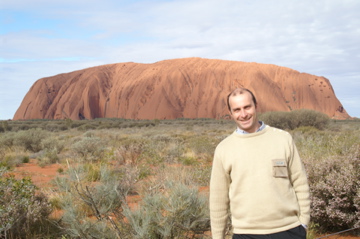On a visit to Australia‘s Gloucester Tree, two tourists jumped as I barked at them. 350 plus years old and standing at 72 metres tall, this Karris is the second tallest fire lookout tree in the world.
Over one million tourists have climbed the tree in Pemberton, Western Australia since 1947. These two tourists had decided that the tree needed their names carved into the tree and were engrossed in the task with a knife when chewed out by me . Furious at this intrusion into one of my favourite spots, I was determined to make them stop. Telling the ranger later, she lamented that this was a never ending battle.
As the son of an archaeologists, I was horrified to see tourists clambering all over Angkor Wat in Cambodia past signs saying “Danger” and “No Entry” and “Keep off”. An ancient relic is danger of being squashed to death by tourists seeking the best “selfie” spot.
Parisian authorities are being urged to ban the tradition of lovelocks leaving locked padlocks in bridges which are starting to cause significant damage and irritation within that city.
I have seen tourist graffiti on church walls in Italy, bits of statues appropriated to take home and rock art painted over. Its selfish, rude and spoils it for others (read: spoils it for me).
When in Uluru (Ayers Rock) I have been fascinated and horrified by a collection of artefacts in a hut on the way to the rock. These include rocks and dirt that were collected by tourists and then returned. Every tourist who has returned stuff complains of being plagued by bad luck from the time they took their artefact. The site is considered sacred and the local people believe that nothing should be taken from the site.
I was brought up with the slogan: Take nothing but pictures. Leave nothing but footprints. This saying seems to have been adopted by the Sierra Club in the USA in the early twentieth century from a translation of a speech purported to be by native American leader Chief Seattle. While it has been literally applied to wilderness zones, I think it is a good adage for travelling anywhere.
What do you think?
Related Posts
Chinese Guidebook for Civilised Tourism






What do I think?
I think you should not attribute a quote to Chief Seattle, unless you are sure of it.
I think your missing the bigger issue here with the article being titled “Avoiding Damaging the World”. Its sad to see relics such as Angkor being literally trampled but in the end, tourism’s most damaging impact to the world will be its carbon footprint. Climate change is being accelerated by the much more problematic greenhouse gas methane that is being released from a thawing arctic and an increasing amount of carbon being put into the atmosphere every year. While I agree with your philosophy of leave no trace the truth is that most likely you left a pretty big impact just by flying to that destination. With carbon dioxide being invisible its easy to ignore and think of it as not having an impact but future generations will most assuredly differ with this.
While I’m not trying to demonize travel, as it probably sounds, I feel that people don’t understand the significant impacts that flying across the planet has. I recommend looking at the accelerated ice loss that is taking place in Greenland, particularly the layer of black soot covering the ice that is thought to responsible. And also just to travel smarter which will make the trips more worthwhile, don’t go around the world on a points ticket because its “free”(you spend 80% of your time in airports and airplanes anyway), travel to somewhere and set up shop, relax and really experience what that place has to offer.
I’ve ramble enough, nothing like putting off homework.
I once yelled at two Spanish “youths” scratching their names into the Great Wall in China. This behavior probably dates back to when humans learned to “tag” stuff.
No comments….huh
Agree, especially the ugly carvings, misfit grafittis and the padlocks on the brige over La Seine. Don’t really understand what is the source of such tasteless inspiration. The value of such sites is greatly deteriorated.